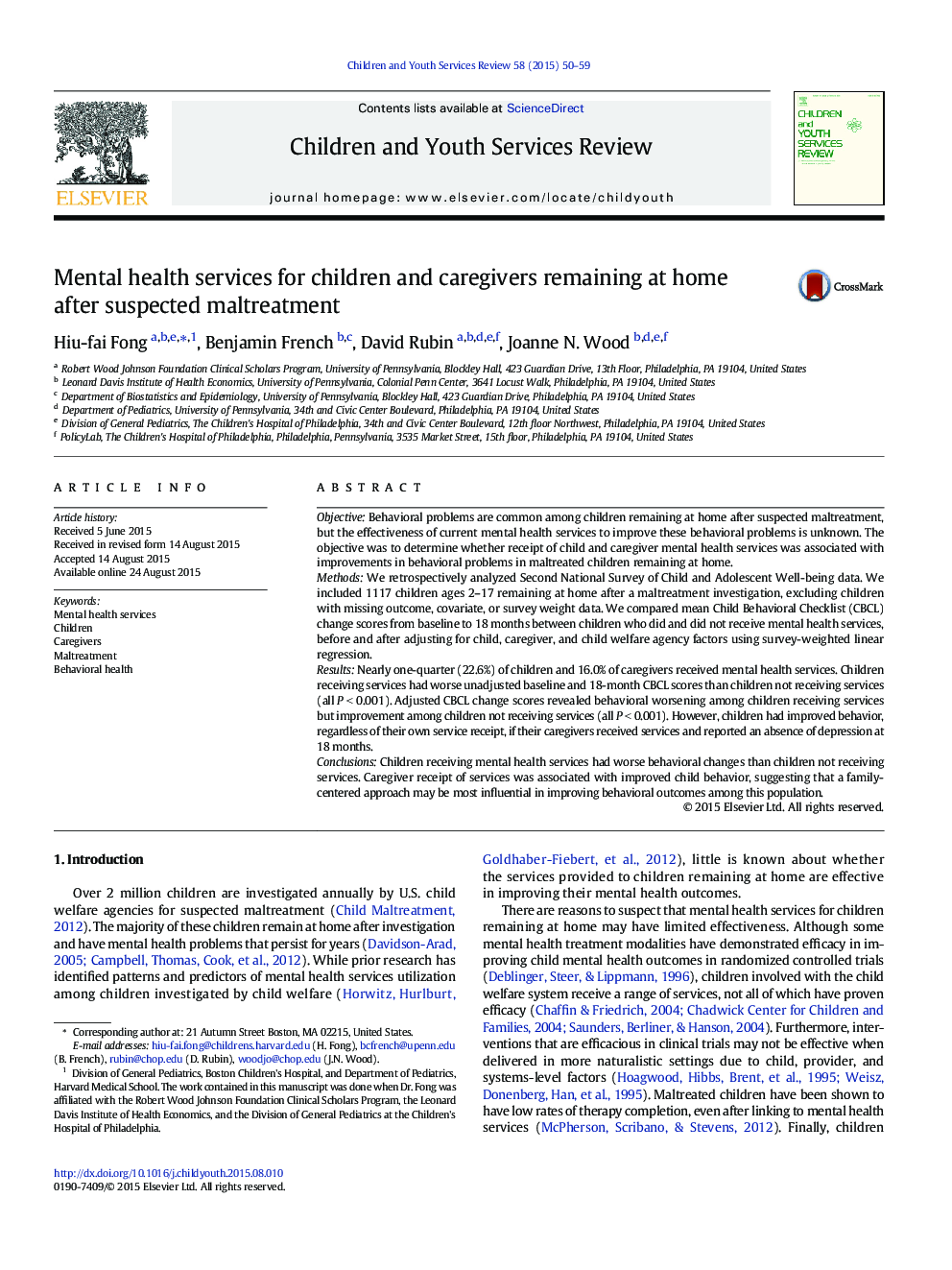| کد مقاله | کد نشریه | سال انتشار | مقاله انگلیسی | نسخه تمام متن |
|---|---|---|---|---|
| 345918 | 617773 | 2015 | 10 صفحه PDF | دانلود رایگان |
• We studied 18-month behavioral changes among maltreated children remaining at home.
• Children who got mental health services had worsening 18-month behavioral changes.
• Child behavior improved if caregivers got services and lacked 18-month depression.
• Existing mental health services may not be addressing needs of maltreated children.
• A family-centered approach may be most influential in improving child behavior.
ObjectiveBehavioral problems are common among children remaining at home after suspected maltreatment, but the effectiveness of current mental health services to improve these behavioral problems is unknown. The objective was to determine whether receipt of child and caregiver mental health services was associated with improvements in behavioral problems in maltreated children remaining at home.MethodsWe retrospectively analyzed Second National Survey of Child and Adolescent Well-being data. We included 1117 children ages 2–17 remaining at home after a maltreatment investigation, excluding children with missing outcome, covariate, or survey weight data. We compared mean Child Behavioral Checklist (CBCL) change scores from baseline to 18 months between children who did and did not receive mental health services, before and after adjusting for child, caregiver, and child welfare agency factors using survey-weighted linear regression.ResultsNearly one-quarter (22.6%) of children and 16.0% of caregivers received mental health services. Children receiving services had worse unadjusted baseline and 18-month CBCL scores than children not receiving services (all P < 0.001). Adjusted CBCL change scores revealed behavioral worsening among children receiving services but improvement among children not receiving services (all P < 0.001). However, children had improved behavior, regardless of their own service receipt, if their caregivers received services and reported an absence of depression at 18 months.ConclusionsChildren receiving mental health services had worse behavioral changes than children not receiving services. Caregiver receipt of services was associated with improved child behavior, suggesting that a family-centered approach may be most influential in improving behavioral outcomes among this population.
Journal: Children and Youth Services Review - Volume 58, November 2015, Pages 50–59
